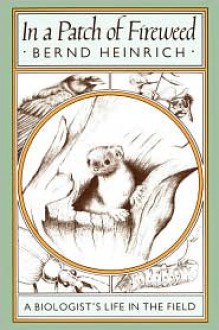
This is a good book, but for the right person. It will not fit everybody.
The author, a naturalist and teacher, spends one year in his cabin in Maine. It is a log cabin that scarcely stays warm. He cuts down trees and chops his lumber. He has no running water. No refrigerator. He is divorced, but his kids do not live with him, although his son of nine does visit. He comes to the cabin to refind himself, to slow down and also to raise and continue his studies of ravens. This author has written several other books. I preferred both The Snoring Bird: My Family's Journey Through a Century of Biology and Winter World: The Ingenuity of Animal Survival.
This naturalist is continually puzzling out how our world works. On every walk, with every thought, with every action, on every viewing of the world around him he poses questions about nature. Then he figures out how to find the answer. He measures growth of trees, he watches red squirrels and discovers how they make syrup, he studies animals and bugs and plants and the formation of the earth. Everything of nature interests him. He opens his eyes and sees the moon and then he explains for example why the moon has the same appearance (i.e. the same amount and shape visible) for all who can view it. He measures the minutes more of sunlight he has every day. The world is a big laboratory for him. In this book he puzzles out and explains in detail how all parts of his world in the woods works during the summer, fall, winter and finally spring.
I believe the more knowledgeable you are about different species of fauna and flora, the more you will get out of this book. When he mentions that he came across a particular insect, it helps to know which insect he is talking about. I didn’t always. Sometimes I could not follow his detailed explanations. Sometimes I would have preferred just a sentence about the beauty of that around him. He did think the fall leaves in all their different hues were magnificent, but he immediately started analyzing why some trees have only one fall color while others have several. He did look at the world around him and compare it to how people behave. Are we the same? Are we different? What can we learn from this phenomenon?
There were many beautiful line drawings of twigs and buds, of plants and animals.
To conclude I would have preferred a little less science and more about ravens. He loves ravens. When he talks about them, you know where his heart is. When his baby raven leaves, when he grows up and flies away, it breaks my heart (not his). I would have preferred more about his relationship with Jack, the raven. I didn’t want that to end. But of course it had to, and it happens early in the book!

 Log in with Facebook
Log in with Facebook 









